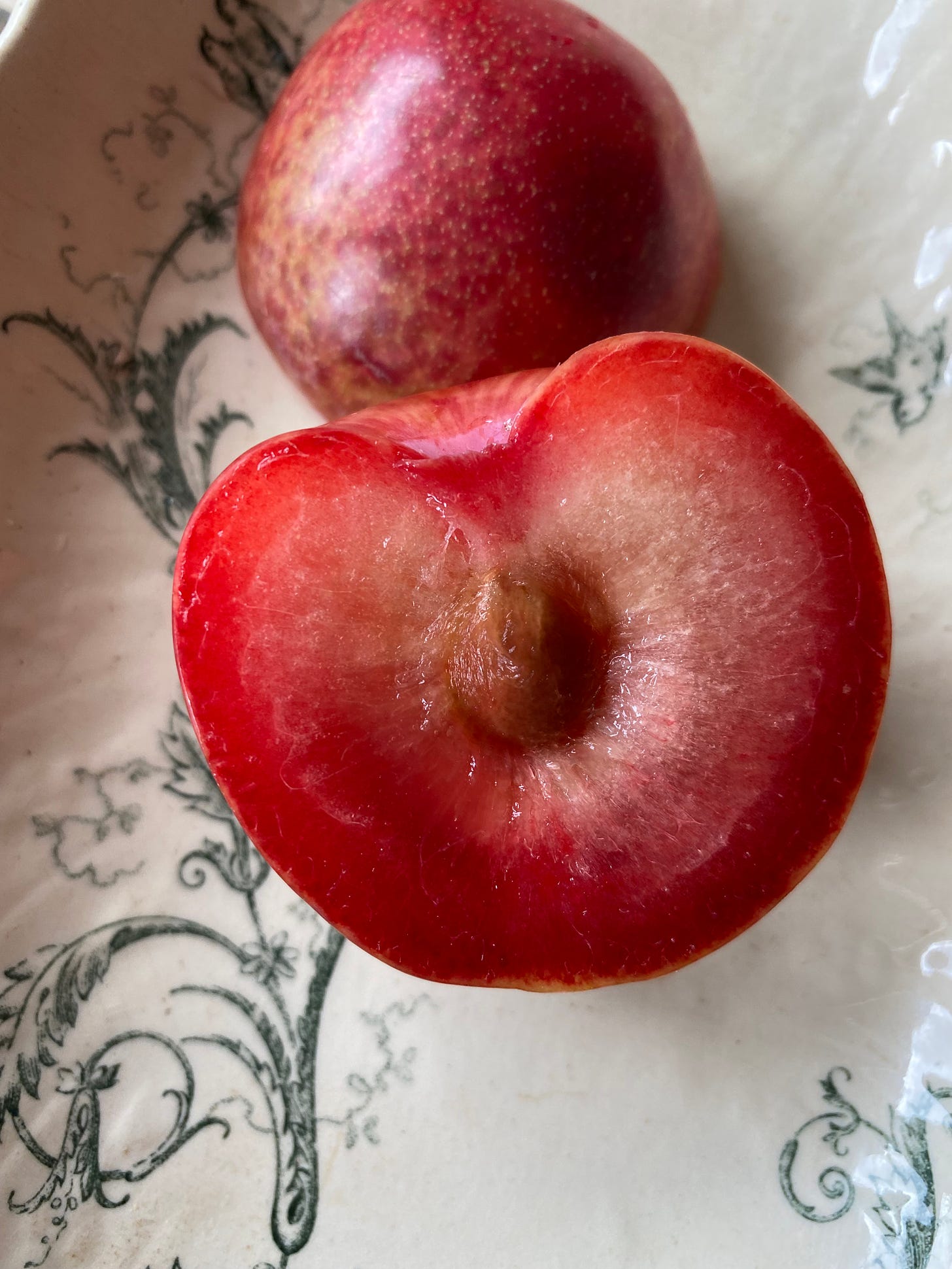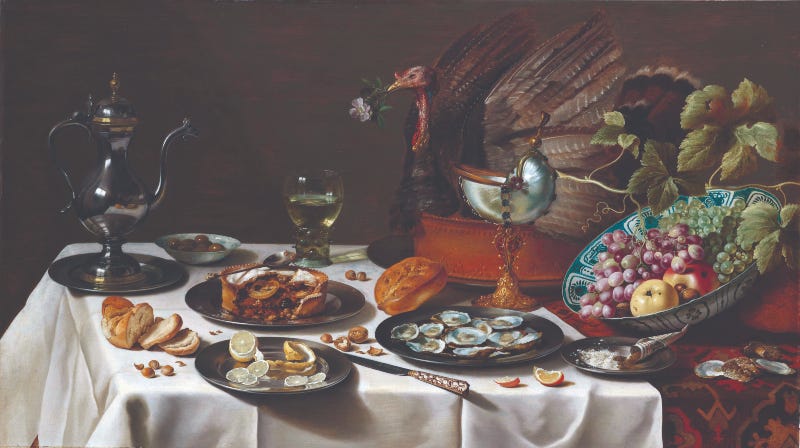It’s hard to believe that it’s almost September. Slowly, the variety at the markets is starting to change as my thoughts inevitably turn toward the arrival of autumn. Though I look forward to cooking with pumpkins and wild mushrooms again, I hate to see summer’s bounty disappear for another year. No more fragrant strawberries and succulent peaches to feast on as an afternoon snack or dessert. Of course, canning can provide solace and comfort, but nothing compares to fruits and vegetables in their freshest, purest form.
Luckily, pluots (a hybrid stone fruit, more plum than apricot) are plentiful until well into October, and the fabulous thing is that I love them just as much fresh as I do cooked.
No, scratch that.
I think I love them even more after the heat of the oven or pan has worked its magic and intensified the perfect union of sweetness and acidity of their blushing flesh. This unique fruit is wonderful in crumbles, jams, pies or even as a sauce to serve with duck magrets or venison steaks.
Pluots were plentiful again at the farmers’ market last Saturday, and it didn’t take long for me to decide that they would be used for a galette. Basically, a galette is a rustic pie with fruit in the center and the edges folded in toward the fruit. No need for a special pie dish and certainly no need to worry about pretty edges or lattice crusts! The great thing about a galette is its simplicity. The rich, buttery crust is super easy to make in your food processor and will serve as a basis for all kinds of variations, provided you stick to 600 grams of fruit. In spring, a strawberry and rhubarb galette is a thing of beauty, as is one with pears or apples in autumn.
This week, we’ll be rounding off our French desserts and pastries series with my recipe for a pluot galette delicately scented with a whisper of lemon zest. It’s a delight warm with a scoop of vanilla ice cream or honeyed crème fraîche, but in reality, there’s no need for embellishments.
While the galette fills your home with irresistible aromas, we’ll look at the history of the Dutch table piece, a genre that is very close to my heart. I remember the first time I had the pleasure of standing in front of Pieter Claesz’s Still-Life with Turkey Pie (1627).
Still-Life with Turkey Pie (1627), Pieter Claesz, Rijksmuseum, Amsterdam
It was at the Rijksmuseum in Amsterdam, and I had spent a good part of the morning contemplating the fine brushstrokes and exquisite detail of many 17th-century Dutch masterpieces. Most paintings drew me in, making me forget the masses of tourists walking by, but Claesz’s painting had another (not at all unexpected) effect on me. Quite simply, it made me very hungry. The bulging pie temptingly cut open to expose a hearty filling of meat and dried fruits, the gleaming skins of the juicy grapes, the golden crusts of the rolls and those oysters! How I longed to reach into the painting, sprinkle an oyster with a squeeze of lemon juice and wash it down with a sip of the white wine in the elegant roemer. At that moment, I developed a special appreciation for the Dutch table piece. As an art (and food) lover, it was inevitable.
Let’s dig into this delectable post!
On y va!






